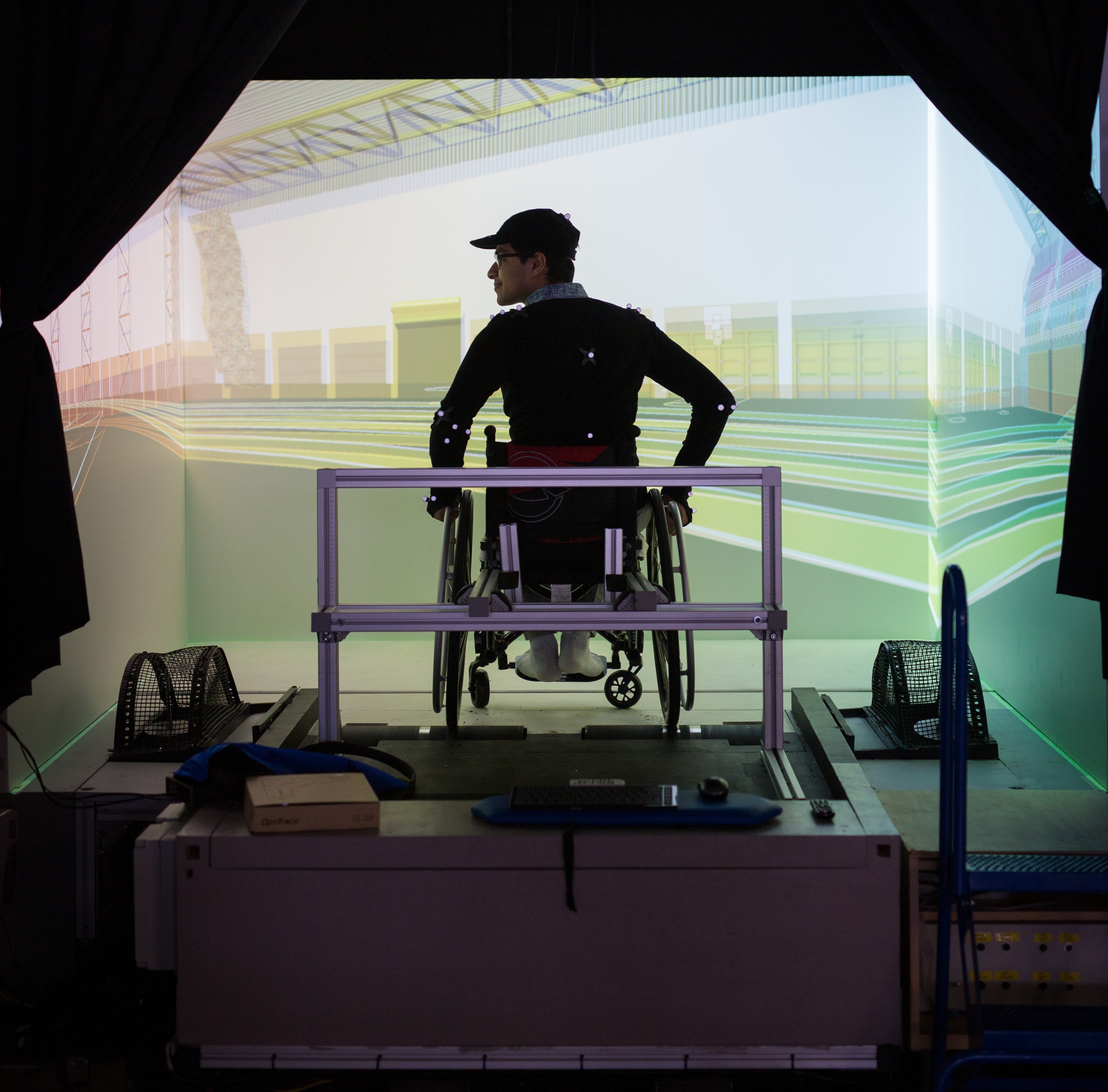
John Christy Johnson, pictured here using the EON iCube, a wheelchair and head/body movement tracking cameras to measure propulsion, is currently examining maneuverability in manual wheelchair users. (Photo: UAlberta, Office of the Registrar)
When explaining what it's like for someone with a disability to navigate everyday life, John Christy Johnson wants you to imagine yourself at a busy coffee shop.
"You would have to wait in line, place an order and find a suitable spot to dine, all while avoiding the hustle and bustle of pedestrians, engaging in social interaction and physically navigating around tables."
Now imagine doing all of that while using a manual wheelchair.
Globally, an estimated sixty-five million people require daily use of a wheelchair. Many will use a manual wheelchair in their day-to-day life and many will face similar scenarios when visiting crowded spaces-establishments that everyone should have rightful access to and be able to enjoy.
That's why Johnson, a second-year Master of Science student in the University of Alberta's Department of Biomedical Engineering, is currently examining manoeuverability in manual wheelchair users in order to improve accessibility and universal design for those living with disabilities. The research will also address reducing the rate of upper body injuries individuals face from the repetitive movements and physical stress placed on limbs while navigating.
The project, by way of principal investigator Martin Ferguson-Pell, professor in the Faculty of Rehabilitation Medicine and co-founder of the Rehabilitation Robotics Lab, was recently awarded the Stephanie Chipeur Accessibility Research Fund-one-time grant funding provided to researchers currently working on projects in the areas of social justice and accessibility in rehabilitation medicine.
Chipeur, who suffered a spinal cord injury in 2014 after a devastating car accident, inspired the creation of the fund. Her own experiences with rehabilitation have been motivation for researchers to focus on accessibility and inclusive design as a major part of the rehabilitation process.
"Accessibility and inclusive design in Canada is about creating communities, learning environments, workplaces, services and products that enable everyone to fully participate in society. Manoeuverability is a crucial component of wheelchair accessibility for both individual wheelchair users and those around them," says Johnson.
Ferguson-Pell and his team are working to further their research, which will suggest strategies to improve manoeuverability by creating simulations using 3D motion capture systems, virtual reality and smart devices, in hopes of reducing some of the barriers wheelchair users face when navigating spaces.
"This has not been undertaken before, where functional settings are simulated, and accurate and comprehensive analyses of the stresses on the upper body can be determined. The goal is to be able to identify locations where manoeuvering is particularly challenging, which will allow us to advise city planners about how to reduce these barriers," said Ferguson-Pell.
With an estimated completion date of June 2020, the project will be recruiting 10 manual wheelchair users for guiding and informing simulation development and another 15 for simulation activities.
"We will be collecting information on the forces and movements of participants to create three biomechanical models that will enable us to translate the wheelchair biomechanics data from the lab to our virtual reality wheelchair simulator," explains Johnson.
"Wheelchair biomechanics manoeuverability data can be useful for incorporating into existing accessibility programming."
While the project was set in motion by great minds such as Johnson's, the research would not be possible without Chipeur's support.
"Through her lived experience, [Chipeur] has become an icon when it comes to pushing against the current-striving to remove barriers to participation in our society for persons with disabilities. Following her example, our research strongly emulates the same ideals. We not only want to better understand the challenges, but also translate and mobilize these findings into tangible social change-to improve accessibility and everyday life for those living with disability."
For more information about biomechanics and disability projects currently taking place in the Rehabilitation Robotics Lab, visit uab.ca/rrl.